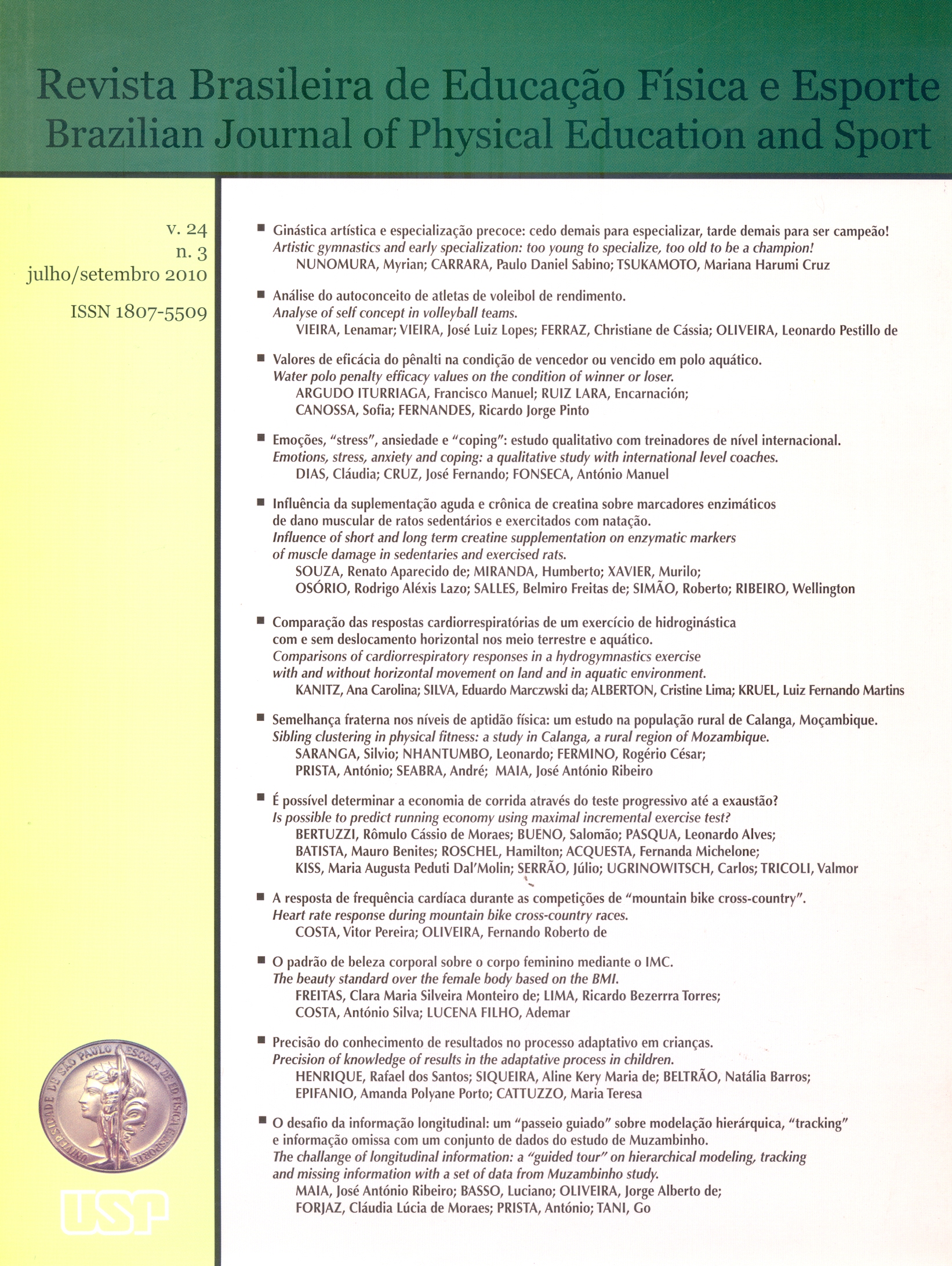Is possible to predict running economy using maximal incremental exercise test?
DOI:
https://doi.org/10.1590/S1807-55092010000300008Keywords:
Maximal oxygen uptake, Blood lactate, Respiratory exchange rateAbstract
The purpose of the present study was to investigate the association between running economy (RE) and the slope of the regression line obtained as the individual relationship between oxygen uptake and the corresponding intensity in the incremental test (EC INCLINA). Sixteen recreational long-distance runners (age 32 ± 7 years, body mass 70,0 ± 6.7 kg, height 173.3 ± 5.0 cm, VO2max 57.9 ± 5.8 ml·kg-1·min-1) performed a progressive incremental test and two submaximal workload tests (at 12 km·h-1 and 90% second ventilatory threshold) to determine the RE. There was significant correlation between EC INCLINA and RE measured at 12 km·h-1 (r = 0.49; p = 0.054) and at 90% second ventilatory threshold (r = 0.55; p = 0.027). In addition, EC INCLINA also was negatively correlated with peak blood lactate (r = -0.75; p = 0.001) and peak respiratory exchange rate (r = -0.80; p < 0.001). These findings suggest that EC INCLINA would be an alternative parameter employed to determine the endurance performance in recreational long-distance runners.Downloads
Download data is not yet available.
Downloads
Published
2010-09-01
Issue
Section
naodefinida
License
Todo o conteúdo da revista, exceto onde está identificado, está licenciado sob uma Licença Creative Commons (CC-BY)
How to Cite
Bertuzzi, R. C. de M., Bueno, S., Pasqua, L. A., Batista, M. B., Roschel, H., Acquesta, F. M., Kiss, M. A. P. D., Serrão, J. C., Ugrinowitsch, C., & Tricoli, V. (2010). Is possible to predict running economy using maximal incremental exercise test? . Brazilian Journal of Physical Education and Sport, 24(3), 373-378. https://doi.org/10.1590/S1807-55092010000300008


